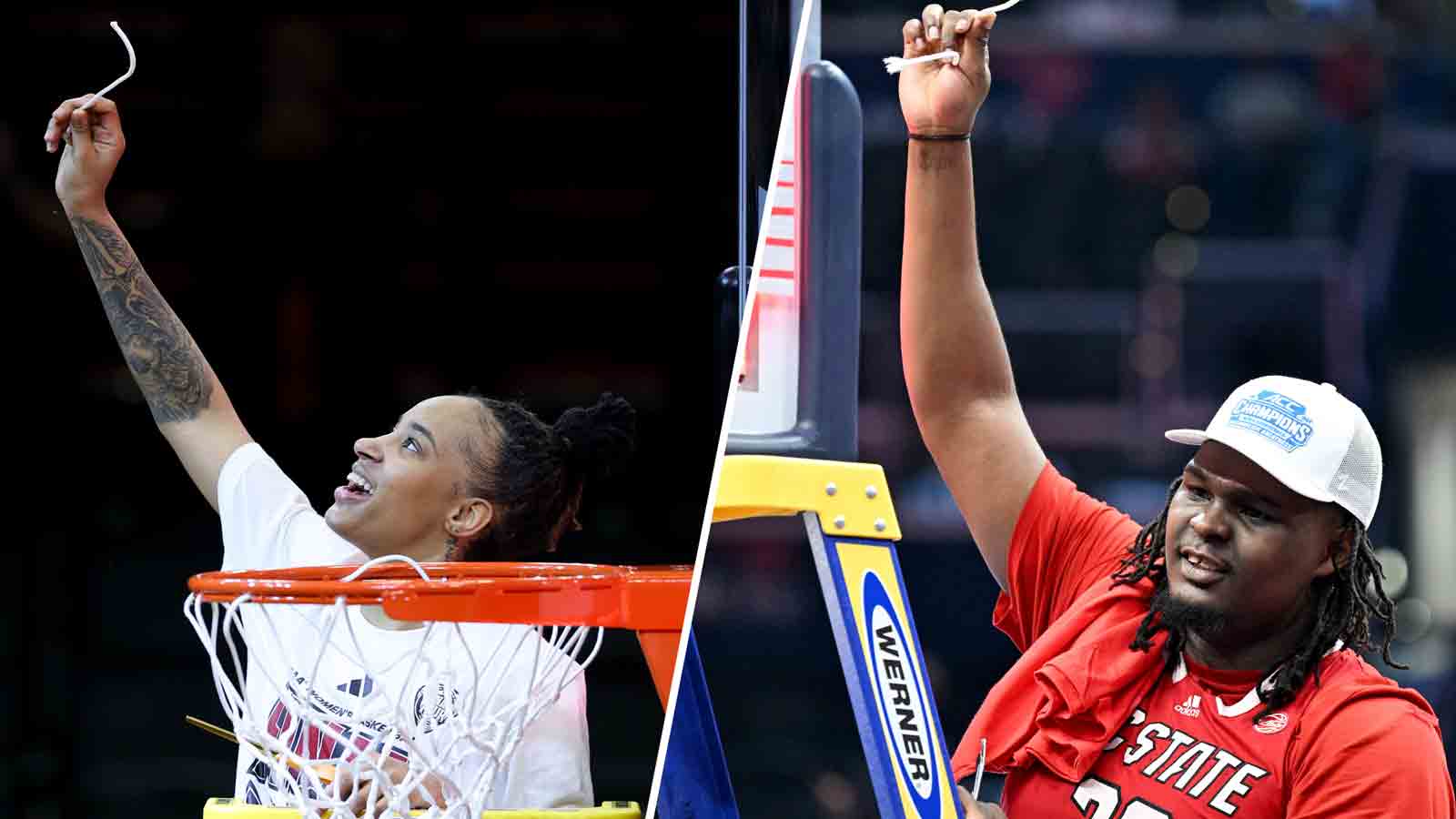Big-time players make big-time plays in big-time games.
That's what happened in the Elite Eight this year, when four dominant centers helped lead their squads to the Final Four. Donovan Clingan had 22 points and 10 boards in UConn's win, which set up a matchup with Alabama's Nick Pringle -- who had 16 points and 11 rebounds for the Crimson Tide against Clemson. On the other side of the bracket, Purdue's Zach Edey had 40 points and 16 rebounds and NC State's D.J. Burns had 29 points and four rebounds to set up the Final Four.
Will the centers continue to star in Arizona? Or will some of the other players break through with memorable performances?
Stay in the game with the latest updates on your beloved Bay Area and California sports teams! Sign up here for our All Access Daily newsletter.
Here’s a look back at all the Final Four and championship game records that these players will be chasing:
NCAA Men’s Basketball Tournament semifinals: Individual records
Al Wood and Carmelo Anthony put their respective teams on their back offensively in the Final Four en route to the national championship game. Gilbert Arenas and Jeff Withey, meanwhile, dominated defensively. Freddie Banks and Mark Wade even set records during the same game.
Here’s a glance at some individual records from NCAA Tournament semifinal contests:
Points: Al Wood, North Carolina, 1981 – 39
Points by a freshman: Carmelo Anthony, Syracuse, 2003 – 33
3-pointers made: Freddie Banks, UNLV, 1987 – 10
Assists: Mark Wade, UNLV, 1987 – 18
Rebounds: Elvin Hayes, Houston, 1967 – 24
Steals: Gilbert Arenas, Arizona, 2001 – 6
Blocks: Jeff Withey, Kansas, 2012 – 7
NCAA Men’s Basketball Tournament semifinals: Team records
UCLA’s 1965 Final Four performance has held a place in history for nearly six decades. John Wooden’s Bruins put up 108 points against Wichita State, including 65 in the first half. Both of those marks remain records to this day.
Along with UCLA, there are more premier programs that hold records in national semifinal games:
Points: UCLA, 1965 – 108
Points in a half: UCLA, 1965 – 65
Winning margin: Villanova, 2016 – 44
Biggest comeback: Duke, 2001 – 22
3-pointers made: Villanova, 2018 – 18
Assists: Louisville, 1986; Gonzaga, 2021 – 26
Rebounds: Michigan, 1957 – 65
Steals: Kentucky, 1997 – 14
Blocks: Kansas, 1988; Maryland, 2002; Kansas, 2008; Virginia, 2019 – 9
NCAA Men’s Basketball National Championship Game: Individual records
The NCAA national title game record books are full of big men from the NBA’s 75th Anniversary Team. Bill Walton scored the most points in a title game, Bill Russell snagged the most rebounds and Anthony Davis shares the record for most blocks.
Here’s a list of individual records for the men’s national title game:
Points: Bill Walton, UCLA, 1973 – 44
Points by a freshman: Toby Bailey, UCLA, 1995 – 26
3-pointers made: Steve Alford, Indiana, 1987; Dave Sieger, Oklahoma, 1988; Tony Delk, Kentucky, 1996 – 7
Assists: Rumeal Robinson, Michigan, 1989 – 11
Rebounds: Bill Russell, San Francisco, 1956 – 27
Steals: Ty Lawson, North Carolina, 2009 – 8
Blocks: Joakim Noah, Florida, 2006; Anthony Davis, Kentucky, 2012 – 6
NCAA Men’s Basketball National Championship Game: Team records
When it comes to team records in the national championship, the 1990 UNLV Runnin’ Rebels take the cake.
Jerry Tarkanian’s squad put together the most dominant championship win in the history of the men’s tournament. The team scored the most points and ended with the biggest margin of victory in a 103-73 drubbing of Duke. On top of that, the team also set title game records for assists and steals.
Here are some notable records put together by teams in the national title game:
Points: UNLV, 1990 – 103
Points in a half: Indiana, 1976 – 57
Winning margin: UNLV, 1990 – 30
Biggest comeback: Kansas, 2022 – 16
3-pointers made: Kentucky, 1996; Illinois, 2005 – 12
Assists: UNLV, 1990 – 24
Rebounds: UCLA, 1969 – 61
Steals: UNLV, 1990 – 16
Blocks: Kentucky, 2012 – 11
Editor’s note: An earlier version of this article was published in April 2022.


